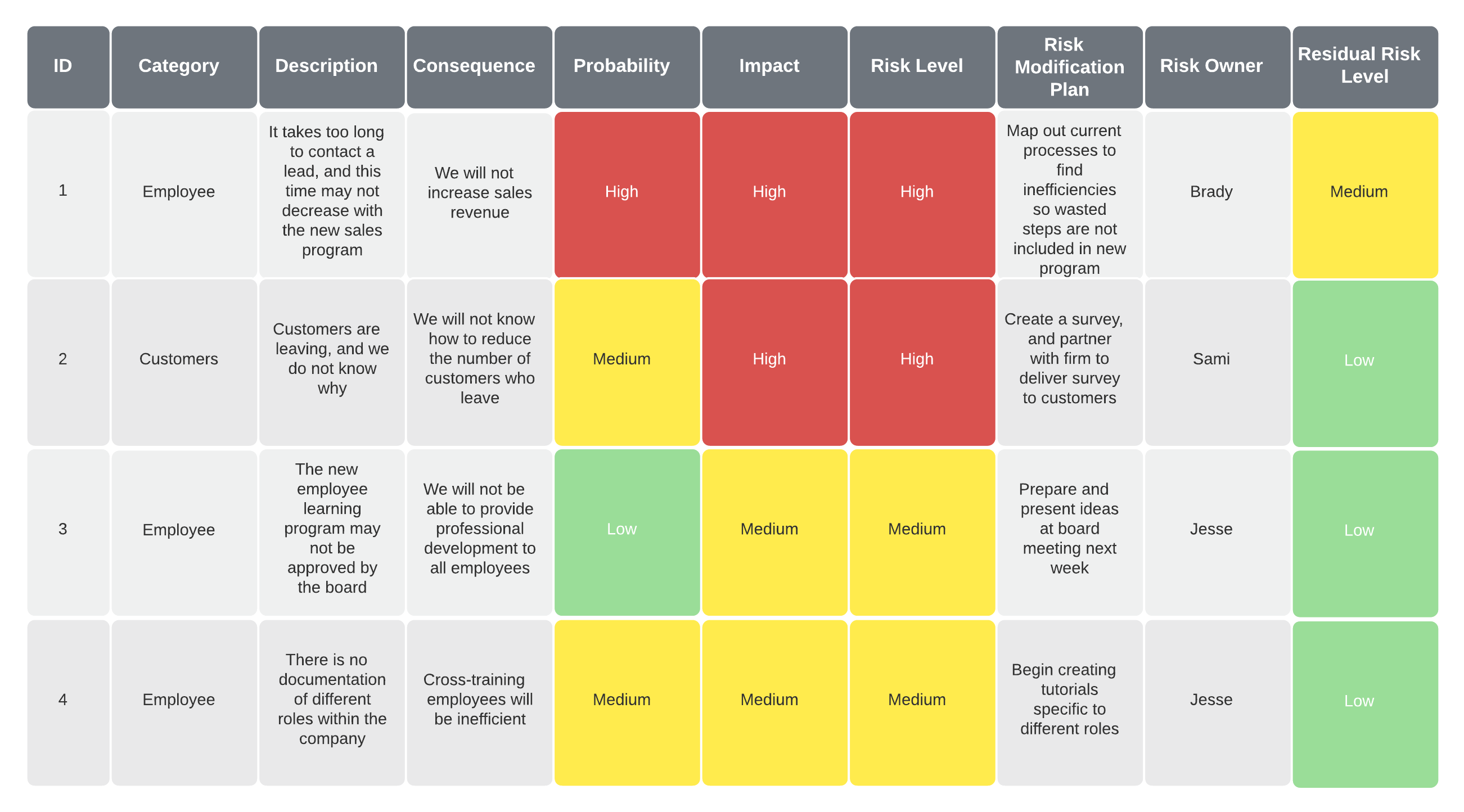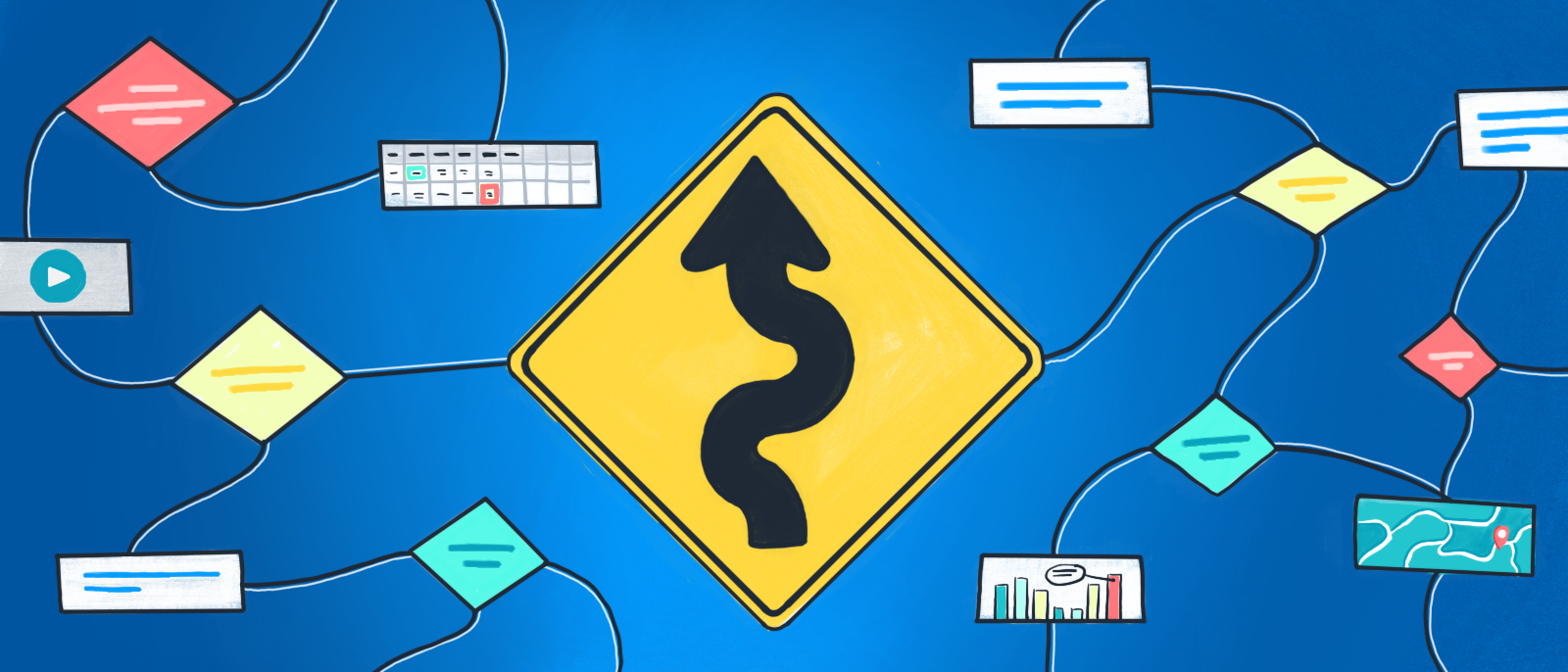Helping a business thrive in today’s changing economy takes more than determination alone. It also requires strategic leadership, competitive analysis, and capital resources.
And when unforeseen (or unlikely) events seemingly align to jeopardize all of that hard work, planning, and growth, the organizations who continue to succeed are often those with a calculated response to risk. Some have even learned to turn risk into advantage.
This is the essence of enterprise risk management. And why the creation and execution of such a plan has quickly become a must for companies of every size, especially when 62% of organizations report experiencing a critical risk event within the past three years.
For those unfamiliar with enterprise risk management, let’s start with a quick definition.
What is enterprise risk management?
Enterprise risk management (ERM) is a process established solely for the development, organization, administration, and oversight of activities intended to mitigate the influence of risk on a business’s assets and profitability. This process can encompass several variations of risk factors from the economic, strategic, and operational to the accidental or incidental.
Risk management is a concerted effort to identify and assess the most significant risks faced by an organization. This identification and assessment is followed by a determination of the most appropriate (or timely) risk response. Events like COVID-19 represent the type of risk that can’t be overlooked.
LThe types of risk responses in an ERM plan can include:
- Levels of acceptance and tolerance of risk
- Ways to avoid or terminate a particular risk
- Procedures to diminish or moderate a risk
- Methods for sharing or transferring of risk
Enterprise risk management also involves the procedural documentation, training in risk response, and monitoring and reporting on risks.
So, is ERM worth the effort? Absolutely. As you’ll see, risk management can guide your business through unprecedented times.
Here’s how.
Benefits of enterprise risk management
Enterprise risk management can transform your organization from within. It starts by helping you view risk differently, seeing it for all the potential opportunity and competitive advantage it can provide rather than as just a source of setback and loss.
Emboldened by a risk management mindset, your business can:
- Make better, well-informed decisions based on data.
- Eliminate operational redundancies and inefficiencies.
- Reduce time and cost via greater resource allocation.
Enterprise risk management presents a value proposition that’s hard for any business to ignore. But what does it take to implement an ERM plan that endures and thrives within your organization? What are the components of a disciplined risk management plan?
Let’s find out.
Key attributes of effective enterprise risk management
Not long ago, the United States set an annual consumer spending record ($13.28 trillion in 2019) and enjoyed a 50-year unemployment low in February 2020. Then it happened.
COVID-19. When it comes to worst-case scenarios, the pandemic’s economic impact even defied the expectations of many of the largest corporations in the U.S. But it also reaffirmed the importance of establishing an ERM framework within your organization.
To be effective, risk management requires a unified effort defined by action, attention, and precision when monitoring and addressing those risks throughout your enterprise.
Here are some of the key attributes of effective ERM practices.
Nonstop agility
Taking the dynamic nature of risk into account, agility is needed for companies to remain responsive in the face of uncertainty. By empowering employees to take quick action, you can stop manageable issues from turning into full-fledged challenges later.
Although processes serve as a guideline, employees require a certain level of autonomy to respond to situations as they arise. Familiarity with the ERM plan itself is its own form of agility as it evokes the appropriate (and practiced) response to familiar types of risk.

Not sure where to begin? Learn the basic 5 steps for a risk management process.
Learn moreSmall starts
In the beginning, the scope of an ERM implementation should encompass one specific area of your business. An organization may choose to focus on a single goal such as:
- Identifying alternate suppliers to ensure continued productivity during shortages
- Creating a resource allocation plan to maintain stability during a product launch
- Improving costs and reducing expenses to offset the rise of new competition
Tackling one objective at a time makes it easier to manage scope, define strategy, and monitor progress before moving on to bigger, all-encompassing risks. This also gives employees the opportunity to get accustomed with the ERM process in a more controlled environment.
Defined responsibility
As a whole, ERM necessitates buy-in and participation from every employee within an organization. However, logic also dictates that certain leaders be assigned to specific areas of risk. For example, the CIO or other technology executives should oversee any risks associated with IT infrastructure vulnerabilities, malware, or possible cyberattacks.
While roles are assigned by department and responsibilities by expertise, the executive team should maintain awareness of, and visibility into, all organizational threats and risks.
Constant alignment
Enterprise risk management implementation necessitates agreement and oversight into how decisions are made while taking the risk appetite of the organization into account.
Like most corporate initiatives, successful ERM alignment will require participation from every facet of the company. Each department’s goals, objectives, and strategies should factor in known enterprise risks, prioritizing how each team should respond accordingly.
With alignment, confusion regarding how and when to respond to risk will be minimized.
Unquestioned transparency
Enterprise risk management efforts are easily undone by a lack of transparency. Every risk owner should track the ERM plan’s impact within their department and highlight any progress being made. Such reporting can be featured in your regular standup meetings.
Details like which actions are currently in motion to address goals or objectives, ongoing challenges affecting the execution of the ERM plan, any fluctuations to the company’s risk profile, and periodic reports on major milestones to leadership should be included.
Of course, departments should alert senior management to urgent risks as they arise.
Holistic perspective
Every individual response to risk can have an impact on other parts of the organization. Stakeholders should be mindful of how processes can overlap (or cancel) one another.
To maintain a holistic perspective, ERM leaders often rely on a risk heat map to visually evaluate the likelihood of risks. This tool can also provide organizations with a “common language” to assign risk probabilities and measure the influence of each risk response.

Without foresight, each response to risk can have an unintended financial effect on the business in the form of capital resources, projected earnings, or even opportunity costs.
Enterprise risk management is a process, not a one-time project. Its success throughout an organization is dependent on the participation of every stakeholder of the ERM plan.
Getting a consensus on your company’s risk tolerance threshold will also be paramount. Remembering to start small, remaining strategic, and successfully mitigating (or avoiding) risks for your business will also gain added trust from leadership for the ERM process.

Learn how to use visuals to drive business strategy through challenging times.
Read our tipsAbout Lucidchart
Lucidchart, a cloud-based intelligent diagramming application, is a core component of Lucid Software's Visual Collaboration Suite. This intuitive, cloud-based solution empowers teams to collaborate in real-time to build flowcharts, mockups, UML diagrams, customer journey maps, and more. Lucidchart propels teams forward to build the future faster. Lucid is proud to serve top businesses around the world, including customers such as Google, GE, and NBC Universal, and 99% of the Fortune 500. Lucid partners with industry leaders, including Google, Atlassian, and Microsoft. Since its founding, Lucid has received numerous awards for its products, business, and workplace culture. For more information, visit lucidchart.com.

